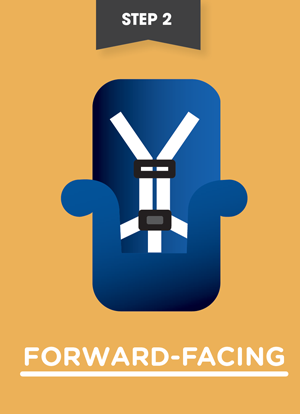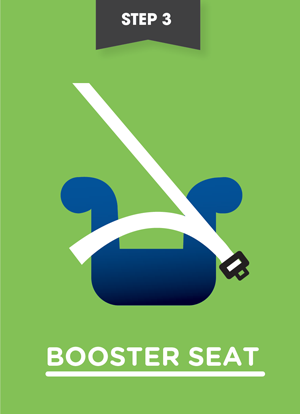Know for sure if your child is in the right car seat.
Don’t Risk Their Lives; get the Facts on Car Seat Safety

Car Seat & Booster Seat Basics
Motor vehicle crashes are the leading cause of death for children ages 1 through 12 years old. Protect your children by making sure they are in the correct car seat or booster seat, based on their height and weight, and drill in the habit to buckle up every single time they ride in the vehicle.
Ask an Expert
There are certified child passenger safety technicians available to help you find and install the right car seat for your child. Find an expert in your area now.
Car Seats Work
When installed and used correctly, child safety seats and safety belts can prevent injuries and save lives.
Correctly used child safety seats can reduce fatal injuries by as much as 71 percent*.
*Safekids Worldwide
Car Seat Calculator
Use the sliders to determine what kind of car seat your child should be riding in based on their height and weight.
REMEMBER: All children under 13 should ride in the back seat and always read the child restraint instructions for proper use and installation.
5 years old

about 50 lb.

Learn the Four Key Stages of Car Seat Safety
From the day you bring them home from the hospital until they learn how to drive, your children will require different restraint systems
to safely ride in a motor vehicle. Our four steps make it easy for parents and caregivers to remember car seat basics and help ensure
their children’s safety.

- A rear-facing infant carrier or a rear-facing convertible seat should be used from birth until your child reaches the seat’s upper weight or height limit.
- Can be used up to 40 pounds or longer depending on the manufacturer.
- Rear-facing harness straps should be positioned at or below your child’s shoulders.
- Rear-facing seats should be installed at the angle determined by the car seat manufacturer.

- A forward-facing convertible seat or a forward-facing-only seat with a five-point harness should be used until a child reaches the seat’s upper weight or height limit.
- Can be used up to 50 to 90 pounds, depending on the manufacturer.
- Make sure to connect your car seat’s top tether strap when installing your forward-facing seat.

- Use a booster seat when your child exceeds the weight or height limit of their forward-facing harness seat.
- You must use a high-back booster seat if your vehicle has low seatbacks and no headrest for your child.
- Minimum weight limits for booster seats vary depending on the manufacturer and the booster seat type (high-back or low-back).
- This type of seat must be used with a vehicle lap and shoulder belt system.

Your child should pass the Belt Fit Test prior to discontinuing use of a booster seat:
- Your child should be able to sit with his or her back flat against the vehicle seat.
- Your child’s knees should bend over the vehicle seat edge.
- Your child’s feet should touch the floor.
- The lap portion of the vehicle seat belt should cross your child’s upper thigh area and the shoulder belt portion of the vehicle seat belt should cross your child’s collarbone area.
ALL children under age 13 should ride in the back seat!
Tips for rear and forward-facing car seats
- Use the vehicle seat belt system OR the LATCH system to install your car seat – not both at the same time.
- Depending on your installation method, check your vehicle owner’s manual to find your lower anchor weight limits OR how to lock your seat belt system.
- Use a piece of pool noodle or a tightly rolled towel at the vehicle’s seat bight if you cannot achieve the proper rear-facing installation angle.
- Make sure to secure your forward-facing car seat’s top tether strap to its designated anchor point in your vehicle.
- Apply your weight to the car seat as you are pulling the slack out of the seat belt or LATCH strap webbing. The seat should not move more than 1" side to side or front to back.
- Height and weight limits can be found on a label adhered to your car seat or in the car seat manual.
Safety tips for all seat types
- All children under the age of 13 should ride in the back seat.
- Do not use a secondhand seat unless you personally know the original owner.
- Do not use a car seat after it has been involved in a motor vehicle crash. Contact your car seat manufacturer for instructions.
- Do not use a car seat after its designated expiration date. The expiration date can usually be found on a label on the seat or imprinted into the plastic shell on the bottom of the seat.
- There are certified child passenger safety technicians available to help you find and install the right car seat for your child. Find an expert in your area now.
